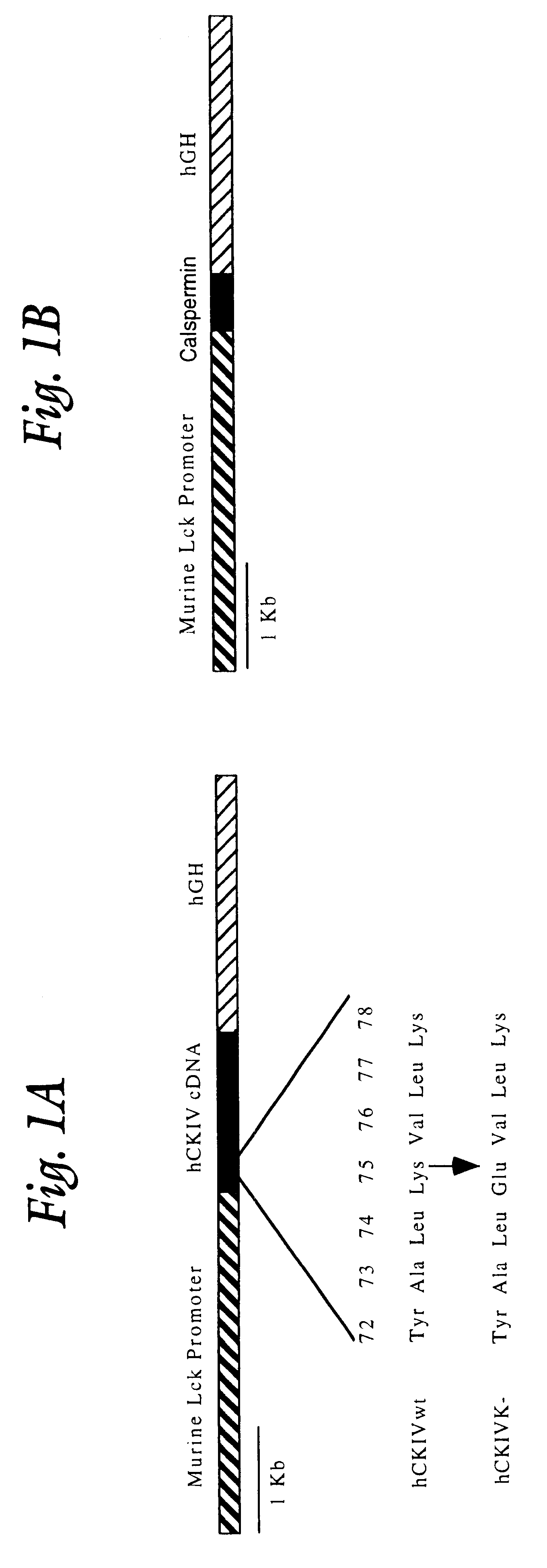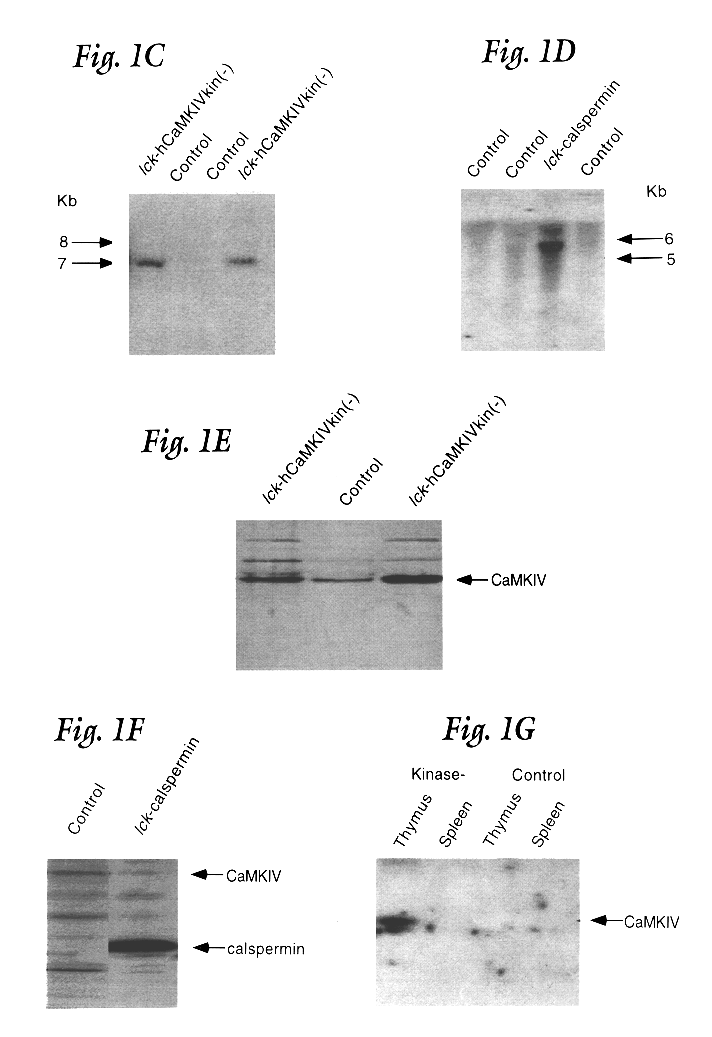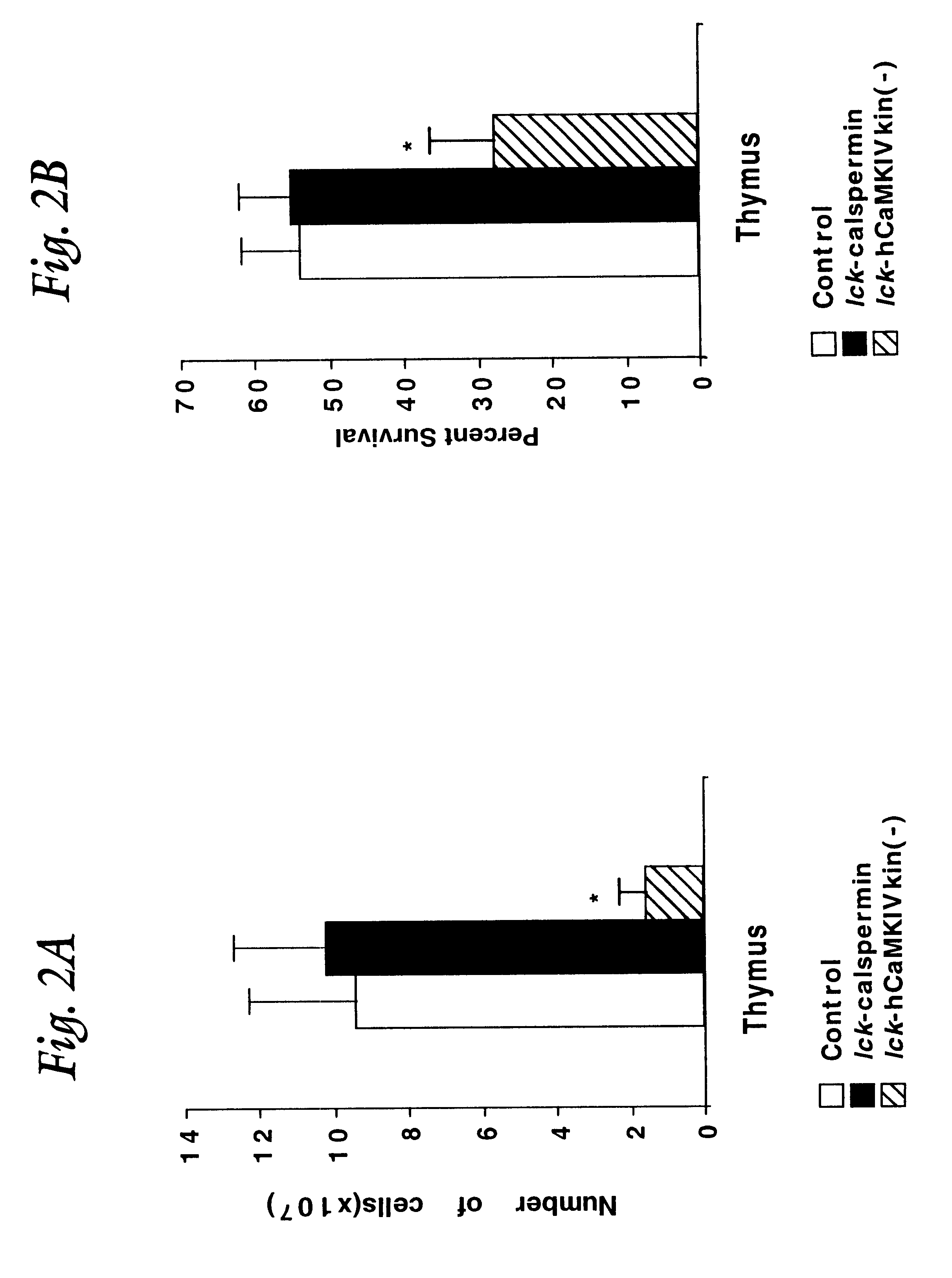Method for screening a test compound for potential as an immunosuppressive drug candidate
- Summary
- Abstract
- Description
- Claims
- Application Information
AI Technical Summary
Benefits of technology
Problems solved by technology
Method used
Image
Examples
example i
Generation of Transgenic Mice
FIG. 1A presents diagrammatic representations of the constructs used to produce transgenic mice. The targeting construct is regulated by the proximal promoter of the murine lck gene and includes sequences of the human growth hormone gene at the 3' end to insure recognition by the splicing machinery. This construct has been shown to direct high level expression of cDNAs cloned between the lck and hGH sequences exclusively in thymic T cells (25, 27). The diagram on the left illustrates the CaMKIV construct. A single mutation was introduced at Lys-75 (Lys to Glu) of the human CaMKIV cDNA that renders the protein catalytically inactive (23, 28). On the right side of FIG. 1A is shown the construct made to produce rat calspermin. Calspermin is a testis specific calmodulin binding protein that is composed of the C-terminal 169 amino acids of CaMKIV (29) and is generated from the CaMKIV gene by utilization of a promoter found in the penultimate intron of the gen...
example ii
Expression of CaMKIV kin(-) in T Cells of Transgenic Mice
To examine the role of CaMKIV in T cells, transgenic mice were generated in which expression of a kinase minus version of CaMKIV was targeted to thymocytes. Since CaMKIV is not detectable at day 15 of embryonic development (E15), a T cell specific promoter was used that is expressed prior to this developmental time. The choice was the proximal promoter for the proto-oncogene lck. This promoter has been shown to target T cell specific expression in transgenic mice (Chaffin et al, EMBO J. 9:3821 (1990)) and, whereas it is not known precisely when the promoter becomes active during development of the thymus, it is expressed by E15 (Reynolds et al, Mol. Cell. Biol. 10:4266 (1990)). Thus, the utilization of the lck promoter maximizes any consequences of expressing the kinase minus CaMKIV since the transgene would be expressed prior to the endogenous gene during thymic development. In addition, the proximal lck promoter is active at...
example iii
Disruption of the CaMKIV Gene in Mice by Homologous Recombination
Mice in which the CaMKIV gene is silenced by homologous recombination have been produced. The DNA construct used to delete a portion of the gene in embryonic stem cells is shown in FIG. 7. The construct was prepared in collaboration with G. Stanley McKnight (University of Washington, Seattle). The construct was electroporated into embryonic stem cells at the NC Transgenic facility at UNC under the direction of Dr. Beverly Koller. The microinjection of the cells into blastocysts and the creation of the original founder mice was also done in that facility.
The primary phenotype of the first group of mice that are nullizygous for the CaMKIV locus, that is relevant to the invention, is that the mice lose all their hair within the first two weeks of life and appear very similar to nude mice. In the nude mouse, hair loss is directly related to the absence of T cells. These experiments confirm that CaMKIV is absolutely require...
PUM
| Property | Measurement | Unit |
|---|---|---|
| Level | aaaaa | aaaaa |
Abstract
Description
Claims
Application Information
 Login to View More
Login to View More - R&D
- Intellectual Property
- Life Sciences
- Materials
- Tech Scout
- Unparalleled Data Quality
- Higher Quality Content
- 60% Fewer Hallucinations
Browse by: Latest US Patents, China's latest patents, Technical Efficacy Thesaurus, Application Domain, Technology Topic, Popular Technical Reports.
© 2025 PatSnap. All rights reserved.Legal|Privacy policy|Modern Slavery Act Transparency Statement|Sitemap|About US| Contact US: help@patsnap.com



